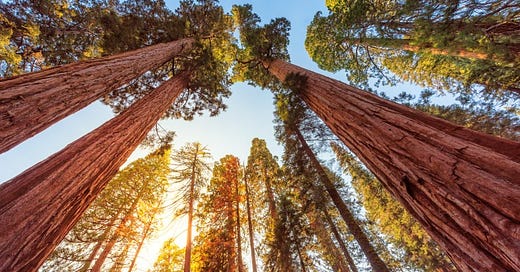It has been eight months since I stepped away from full-time work in a school, and I must admit—I miss the ebb and flow of school life. The rhythm of a school community, its seasons of intensity and renewal, still resonates with me.
Since leaving, I have reconnected with former colleagues, visiting the schools I once called home. And yet, I’ve been careful to give those still in the trenches the space they need to continue their work without feeling watched or judged. Leaving a school, particularly as a leader, means letting go in a way that honors the people and the place. It doesn’t mean you will never return, but it does mean stepping aside so the institution can move forward unencumbered.
There is no perfect way to part with a workplace that has shaped you. Any remark—however well-intended—can be taken out of context and cast as an evaluation. But here is my truth: I have loved every school where I have been fortunate enough to work. Each community, no matter the challenges, has held something to cherish—the people, the students, the mission. And in every place, I have learned.
Now, as I consider what’s next, I see these schools as lodestars, guiding me toward a future in education that is not just sustainable for those within it, but expansive—pushing beyond the walls of the traditional schoolhouse into new and uncharted spaces.
Education thrives when it stretches us beyond the familiar. Yet, in many ways, we have allowed learning to become confined—comfortable, predictable, and homogeneous. This is not just about place but about the willingness to embrace new ideas, perspectives, and people. The current debate around diversity, equity, inclusion, and belonging often gets distilled into simplistic arguments about comfort versus challenge. But true education requires discomfort; it demands an openness to perspectives that push us to rethink what we know.
Consider Finland, long celebrated for its educational model. The country’s increasing diversity due to immigration has created an unexpected challenge: a widening achievement gap between immigrant and native Finnish students. Despite Finland’s commitment to equity, immigrant students often struggle with language acquisition, cultural adaptation, and, in some cases, discrimination. Addressing these disparities requires more than policy shifts—it requires rethinking how education adapts to changing landscapes. And yet, this challenge also presents an opportunity. Diversity, when embraced, enriches the learning environment and strengthens the very fabric of education.
If we want to build an educational model that is truly inclusive and future-focused, we must push the boundaries of where and how learning happens. It is not enough to prepare students for the workforce; we must prepare them for humanity—to be compassionate, adaptable, and curious. That kind of education requires a deep engagement with the world beyond the classroom, a willingness to wrestle with difficult ideas, and an understanding that knowledge is not static but ever-evolving.
Back in the mid-1990s, I was handed a curriculum that featured Greek and Roman myths—great stories, but limited in scope. Wanting to broaden my students’ perspectives, I introduced them to the Bible as Literature, the Upanishads, and Indigenous creation stories.
One story in particular resonated deeply. We read a creation story that spoke of Grandfather Tree, a wise and ancient presence. Conveniently, just across the street from our school stood a towering Sequoia, centuries old. So, we took our books outside, sat beneath its sprawling branches, and listened to a story that suddenly felt alive in the shade of our own elder. In that moment, learning was not confined to a classroom or a book—it was rooted in place, in history, in something far older than all of us.
At some point, that tree will likely give way to time, progress, or necessity. But until then, it stands—offering shade, wisdom, and a quiet reminder that learning is not just about acquiring knowledge but about experiencing the world with wonder and reverence.
As I reflect on my journey, I realize that what draws me forward is not the center of education, but its edges. The margins—where innovation happens, where students who feel unseen can find their voice, where educators who push boundaries sometimes feel isolated—this is where I want to stand. Not because the established institutions are not worthy; they have taught me invaluable lessons. But because at the edges, where education meets the unknown, is where transformation happens.
Giving back through mentoring, coaching, recruiting, accrediting, and leading feels like a privilege, a gift. I have been fortunate to work in schools across Northern New England, the Midwest, the Pacific Northwest, and beyond. Each place has welcomed me, challenged me, and shaped my thinking.
Now, as I land in this new phase of my career, I want to ensure that wherever I stand, it is with an eye toward the future of education—not just preserving what has been, but imagining what could be.
Curated Listening:
For those of us who remember the hazy days of the past as being wonderful in its simplicity, I definitely am here for you. The soundtrack of my own youth came with a heaping helping of Stevie Wonder. Listen to Stevie Wonder sing “I Wish” HERE.




